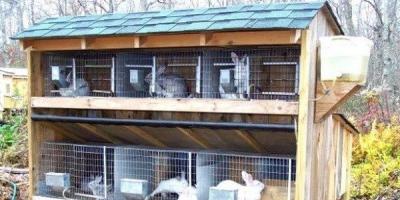Pruning peonies is a rather troublesome, but necessary procedure. Without it, plants bloom poorly and often die during winter. But every summer resident dreams that the peony will bloom beautifully and intensely. To do this, the plant needs proper care, including pruning. Following some rules will help you grow healthy and strong flowers.
When to prune peonies after flowering
Not everyone knows when to cut peonies (this does not mean flowers, but leaves and branches). Peonies need to be trimmed only after making sure that they have bloomed. This is usually done in the fall. It may seem best to prune in the spring, when the plant is just getting ready to bloom. However, this is a misconception. Peonies are pruned only in autumn. When choosing a time frame for performing this procedure, you need to keep the following in mind:
- Don't rush into pruning. If it is carried out in the first or second decade of September, the plant will weaken and the natural process of photosynthesis will be disrupted. Then it will no longer be possible to properly prepare the plant for winter.
- It is best to wait until late autumn, when frosts cease to be a one-time occurrence and become permanent. At this time, the plant enters a period of physiological dormancy, and pruning will not cause it any harm.
- In central Russia, pruning is usually carried out in the first ten days of November, in more northern regions - in the last ten days of October.
- It happens that a flower dries out prematurely due to diseases or pests. In this case, you should not focus on the appearance of the plant when planning the timing of pruning. It is carried out as usual, without moving it to an earlier date.
Experienced flower growers, looking at a peony, determine its condition “by eye” and begin the procedure exactly when the flower begins to prepare for hibernation. This “feeling” comes with experience. If a novice summer resident does not know when to start preparing a plant for winter (including pruning), you can consult with more experienced gardeners. The varieties grown in Siberia and the Urals need to be prepared for wintering first, but in the southern regions there is no need to rush with this. You can read about approximate dates in specialized literature and country calendars.
Important! It all depends on what the weather is like in the fall and what kind of winter is expected.
A timely procedure will help the plant easily survive the most severe cold weather. And, on the contrary, late or too early pruning will weaken the vitality of the flower so much that it will not survive even the warmest and snowiest winter. Statistics say that in winter peonies most often die precisely because of untimely pruning.
Peony pruning
Peonies have faded: what to do with them next
When the peonies have bloomed, any summer resident’s calendar will tell you what to do. In the “autumn” column there will be measures to prepare for winter, including pruning. Removing tops is a rather complicated procedure that requires certain skills. When the peonies fade, it's time to sharpen the pruners for this manipulation. During the procedure, the following rules must be observed:
- Pruning should only be done with sharply sharpened pruning shears, preferably wearing protective gloves, so as not to accidentally injure your hands with sharp, dried branches. There is no need to bend or break the stems of the plant. In general, you should not use brute force when pruning.
- All waste remaining after pruning is burned, since the branches can be affected by dangerous diseases and pests. Therefore, you should not take the leaves to the compost heap. Even one leaf can spread a dangerous infection to a neighboring bush. Diseased shoots are pruned first.
- Only the part of the plant that is above the ground needs to be removed. It would be correct not to cut everything off at the root, but to leave at least small “stumps”. If you accidentally damage the roots, the flower may die and not survive the winter. Peony is a plant with very sensitive and delicate roots.
- The stems above the growth buds are not pruned if their length is up to 5 cm.
- You cannot use cut foliage as shelter for the winter, otherwise harmful insects will flock to them. If you neglect this rule, the procedure will only cause harm instead of benefit.
- Places of cuts and the ground around the flower can be sprinkled with ash. It is rich in potassium, and also repels dangerous pests from peony and disinfects the soil. This must be done, the main thing is to prepare the ash in advance. It can be obtained by burning garden waste and then sifting through a fine mesh sieve.
It is important not to cut everything off at the root, but to leave at least small “stumps”
Note! After pruning, the plant is covered with peat and humus. They provide additional insulation. If winters often have little snow, a flower without shelter may die. And, on the contrary, the plant will tolerate a snowy and not too cold winter well.
Mistakes of novice gardeners
Seeing peonies after flowering, the summer resident thinks about what to do next. Next on the plan are fertilizing and pruning, but these activities are not as simple as they seem. When caring for peony, novice flower growers often make serious mistakes that negatively affect the growth and development of flowers.
- Insufficient watering after pruning. Peonies love moisture very much. If the soil around the plant is even a little dry, the peony may simply not bloom, or the flowering will be sluggish, and the flowers will be deformed and small.
- Feeding with undiluted mullein. Mullein is an indispensable fertilizer for those who work in the garden, but it must be used wisely. This organic fertilizer must be diluted with water, otherwise you can burn the peony roots.
- Cutting off inflorescences that have not yet bloomed. If you do this, next year the flowering will not be so intense.
- Using blunt garden tools when working. Practice shows that it is much easier to get injured with a blunt instrument than with a sharp one. In addition, if the pruning shears are dull, the branches of the plant can be injured.
- Late pruning just before the start of winter. In this case, the plant will not have time to adapt to the cold, and the root system may become infected with fungus. If a summer resident sees that he is clearly late with pruning, it is better not to prune the flowers at all. There is no need to rush into trimming peonies at the end of summer. If the gardener does not know when to prune peonies in a particular region, it is better to consult with neighbors in the area.
Peonies love moisture very much
Under no circumstances should you repeat such mistakes. As practice shows, they are the ones that most often lead to the death of peonies in winter. If improperly prepared for the cold season, even a tree-like flower will not survive the relatively mild winter of the Middle Zone.
Feeding after flowering
Peonies come in different colors, but all are equally pleasing to the eye. The most popular varieties among Russian summer residents are white and pink. But for peonies to look truly beautiful, the plant must be healthy and strong. When the period of intense flowering is over, the plants need abundant feeding to compensate for the nutritional deficiency. Here are the basic rules for feeding peonies:
- It is necessary to fertilize only 3 years after the plants are transplanted.
- If the autumn turns out to be rainy, it is best to use fertilizers in dry granules so as not to cause excessive soil moisture.
- After dry fertilizing, you need to loosen it, then the nutrients will quickly get into the soil and penetrate deeper inside.
- If rains are very rare in the fall, you can safely add liquid fertilizers to the soil.
- Fertilizing in any form should in no case fall on the neck - the upper part of the root protruding above the ground.
Important! To prevent fertilizers from getting on the leaves and root collar, it is most convenient to apply liquid fertilizer in this way: dissolve the products in water according to the instructions and pour the resulting solution into a watering can with the strainer removed from the spout. You can also use an old enamel teapot.
Industrially produced fertilizers are easiest to buy in the form of soluble tablets.
Fertilizer for peonies
Transplanting peonies
Peony is a plant that needs replanting. If you neglect this procedure, the variety will gradually degenerate: the flowering period will be shortened, and the flowers will become smaller every year. The best option is to transplant at least once every 5 years.
- In regions with cold climates, peonies are replanted at the end of August. In areas with warm weather - in the first ten days of September.
- Before replanting, you need to moisten the soil at least a little. If the soil is dry, the plant may not take root in its new location.
- This procedure should not be performed in rainy or windy weather.
- When an old bush is dug up, you need to inspect its root system. A plant with roots affected by fungus or pests cannot be replanted. It will most likely die after this procedure.
- Old roots are immediately cut off and burned, and young roots are placed in a weak solution of potassium permanganate for disinfection for half an hour. Only after this can the transplant be carried out.
Important! The place for these flowers should be moderately sunny and have reliable protection from wind and drafts. Transplanted plants need to be watered at least 2-3 times a week; they do not need fertilizing. Provided that the plants are replanted in a timely manner, the peony in the garden will always look beautiful.
Thus, pruning peonies is one of the most important activities in preparing these plants for winter. After it, the flowers are covered, and the bush enters a period of physiological dormancy. The main thing is not to be late with pruning, so that the flower has time to adapt to the change in weather. In addition to this procedure, peonies need feeding in the fall. You can rejuvenate plants and get rid of dangerous diseases and pests by timely replanting the bushes to a new location.
Country cheat sheet No. 6 is devoted to the topic of caring for peonies after flowering. 😉
July is the time when peonies fade. It is difficult for novice flower growers to imagine what to do with them next: whether to feed them or not, whether to prune faded peonies. All these points are extremely important, since mistakes can be fatal.
Should faded peonies be trimmed?
In faded peonies, only fading flowers can be pruned - this is necessary for the health of the plants! Dry petals will fall off inside the bush, fill with moisture, and become an excellent location for gray rot. Therefore, we cut off the dried caps of peonies.
But!
The bush itself should not be touched; even in August and September it is not recommended to cut off the above-ground part of peonies, although the stems and leaves are already beginning to turn yellow. Ugly? Yes! But even after flowering, the peony lives and prepares for flowering next year - it forms renewal buds underground. Their growth is impossible without the plant part - everything is interconnected. It is best to prune a dried peony bush in late autumn, when all processes have been successfully completed.
Experienced gardeners advise finally cutting off the above-ground part of the peony after the first frost. The bases of the bushes can be covered with a 10-centimeter layer of humus. The shelter will protect the buds and roots from frost, and in the spring it will be a good top dressing.

Peonies have faded: What to do? Feed!
Peonies need feeding not only BEFORE, but also AFTER flowering. It's all about renewal buds again. The peony has faded, but lives an active life, and for this it needs good nutrition.
After flowering, peonies need fertilizing with potassium-phosphorus fertilizer or infusion of wood ash (1 liter of ash per 10 liters of water). Repeated feeding is carried out a month later, and at the end of August - the third, final one. Feeding will allow peonies to accumulate useful substances in the rhizomes.
After trimming faded flowers It is useful to spray peony bushes with a solution of copper sulfate to prevent gray rot.
In July, boric acid can be added to the water for watering faded peonies (1 pinch per 10 liters of water) - this is useful for the formation of renewal buds.
In July, when the peonies have already bloomed, they can also be watered with a solution of microfertilizers (2 tablets per 10 liters of water).
Once the peony has finished blooming, it is useful to give it the following feeding:
- Half a tablespoon of superphosphate and 1/3 tablespoon of potassium salt - per 1 bush. The granules are simply sprinkled under the bush and lightly embedded in the soil by loosening, or an aqueous solution is prepared and watered. Fertilizers are applied best after rain or watering, in damp soil.
Feeding options before and after peonies bloom:

Young peonies do not need fertilizing in the first 1-2 years after planting (provided that a sufficient amount of fertilizer has been added to the planting hole). Peonies aged 3-4 years should ideally be fed 4 times a season, including after the peony has bloomed:

Strong and healthy peonies will be able to successfully overwinter and bloom profusely next year.
What's next? Caring care!
You need to care for faded peonies no less than during flowering:
Watering
In the heat and heat, peonies vitally need watering, rare but plentiful. Up to 30 liters of water should be poured under an adult bush. It is worth considering that the roots that absorb moisture in peonies are located at a distance of 20-40 cm from the center of the bush, so the water should not be poured directly under the bush, but a little further away.
It is very convenient to pour water into grooves 10 cm deep - then it will not spread past. In dry weather, peony bushes need to be watered generously once a week.
It is best to water peonies in the evening so that the moisture evaporates more slowly and is better absorbed.
It is useful to mulch the soil under peony bushes to protect it from the scorching rays of the sun (the weather in July-August after peonies bloom can be extremely hot).
In particular, watering for peonies is necessary:
- at the end of May - beginning of June, during the period of active growth and budding,
- in mid-July - August, when renewal buds are actively forming after the peony has bloomed.
Loosening
It is useful to regularly loosen the soil after each rain or watering. Loose soil allows peonies to breathe. Near the bush itself it is loosened to a depth of 5-7 cm, and at a distance of 20-40 cm from the stems - to a depth of 10-15 cm.
In August - divide and replant
Old peony bushes bloom worse and worse over time, so they need to be divided and replanted. There are different opinions about the frequency of transplants: some gardeners advise dividing peonies once every 8-10 years, others – once every 4-5 years. Here it is better to focus on the state of a specific instance:
- If the bush has grown greatly and began to bloom worse, it is most likely time to replant it. The older the bush, the larger and stronger its roots, the harder it will be to divide it, and this is also worth taking into account.
Optimal time for division and transplantation peony is considered August, but you can still make it during September. We devoted one of our blog articles to the methods and nuances of transplantation:
0Peonies are unpretentious plants. In fact, they are able to grow in almost all soils. But in order for the flowering to be abundant, lush and bright, you need to make some efforts, but even without them the peony will bloom, but weaker.
In its beauty, a peony can outshine all the flowers growing next to it, including roses. But in this case, you need to make some effort. You need to start working immediately after the bush has bloomed. In this case, the plant will decorate the site next year with brighter, stronger and more beautiful blooms. Therefore, it is worth understanding how to care for a peony.
Sequencing
The flowering period of peonies is relatively short - about 2 weeks. Next, over the course of 2-3 months, it is important to pay due attention to the flower, since at this time it is recovering from flowering and gaining strength for wintering and flowering next year. It is also at this time that new buds are formed at the very base of the bush, from which young shoots will appear next year.

The entire care process during this period consists of:
- Cleaning. As soon as the buds have bloomed, they begin to fall off. A mass of small petals completely covers the entire area next to the bush. They not only spoil the appearance, but are also very dangerous, since they create optimal conditions for the development of fungus. For this reason, you must immediately remove all fallen petals.
- Glaze. For a peony to form new buds, it needs moisture. Many gardeners stop watering immediately after flowering and thereby make a grave mistake, which leads to a decrease in the abundance of flowering of the bush in the future. But you also need to know how to water. If, for example, a bush drank 20 liters of water at a time in the summer, then immediately after flowering it is reduced by about 5 liters, then by another 5 liters, and so on gradually, until autumn.
- Loosening the soil. It is necessary to loosen the soil next to the peony after heavy rains and watering, otherwise a crust will form on the surface through which all the moisture will escape. In addition, loosening will help get rid of growing weeds that take away nutrients. You can avoid loosening if you mulch the soil around the peony. To do this, use mown grass, sawdust or humus. Additionally, mulch will serve as a good fertilizer for the flower.
- Feeding. The plant can do without them, but this will affect its beauty. Therefore, if you want to decorate the area with a beautiful plant, you need to add fertilizer to the soil. This should be done not only immediately after flowering, but also in early spring, during the period of growth and flowering. Alternatively, you can use organic matter, for example mullein. It is diluted with water 1:10, stirred thoroughly and poured into a circular groove around the flower. This feeding activates the growth of new stems, buds and root systems. In August, fertilizing is repeated, but mineral fertilizers are used. Potassium-phosphorus complex fertilizers are suitable. One bush will require 30-40 g of fertilizer, previously dissolved in water and applied to the soil in a circular groove. After watering, the top is sprinkled with earth. Additionally, you can spray the plant with mineral fertilizers, choosing dry and windless weather.
- Trimmings. It is not worth trimming the foliage of a peony immediately after flowering, since photosynthesis processes are still occurring in it. Therefore, if you cut the stems right away, the peony will lose them. Of course, it will bloom next year, but the luxuriance of the buds will suffer significantly. You can immediately cut off only the stems that had buds. The green part should be left for now until the first frost. The stems are cut at approximately 2-3 cm from the ground.

It is important to prune fading perennials correctly so that they have time to form flower buds for next year. Peonies after flowering are no exception - pruning and care will not only allow the bush to prepare for winter, but will also affect the number of buds in the new season.
Peonies. The illustration for the article is used under a standard license ©siteHow to trim correctly
Cut flowers are separated from the bush with a sharp knife so as not to crush the stem. When tissues are damaged, bacteria penetrate into the remainder of the trunk, causing various types of rot. In addition, the following rules are observed:
- You cannot cut the stem at the root. When cutting for a bouquet, you need to leave 2-3 leaves at the base of the trunk. This will provide the plant with the required intensity of photosynthesis.
- Only 1/3-1/2 of all stems with buds can be taken for cutting. If pruning was not carried out, and the peonies have bloomed on the bush, after flowering you should not immediately prune the plant. Within 7-10 days, a large amount of nutrients necessary for wintering enters the rhizome from the generative shoot.
Pruning after flowering is carried out as follows:
- Wait until all the buds on the plant have completely faded. The petals should completely fall off or dry out.
- The loose corollas are removed with pruning shears or scissors, cutting off the stem at the level of the first leaf.
- If the foliage is affected by fungal diseases, it can be partially removed, trying to preserve approximately ½ the volume of green mass. In summer it is impossible to prune the bush completely.
- In autumn, you need to cut the stems right to the roots. You can determine the optimal time for pruning based on the condition of the peony: a bush that is ready for wintering has all its stems lowered to the ground. After pruning, cover the tree trunk circle with peat or other loose materials.
Care after flowering
After flowering, it is important for plants to regain strength and prepare for winter by storing starchy substances in the rhizomes. The main thing a peony needs is a sufficient amount of moisture in the soil. If during this period the weather is hot and dry, the owner of the site will have to water the bushes.
Read also:
Soil components
Under 1 bush you need to pour a fairly large amount of water - at least 10-30 liters. The frequency of irrigation is once every 7-10 days.
 Watering peonies. The illustration for the article is used under a standard license ©site
Watering peonies. The illustration for the article is used under a standard license ©site It is important to wet the soil to the depth of the roots. Watering, if necessary, continues until the beginning of September, when the bushes begin to fall to the ground.
After watering, the soil under the bushes must be loosened to retain moisture. Loosening can be replaced by mulching the soil with sawdust, chopped straw, bark, etc.
Feeding
In addition to watering, plants in the second half of summer need to be fed:
- Immediately after flowering, peonies can be fed with mullein solution, herbal mash or other organic fertilizers. Fertilizing is applied along the perimeter of the crown, with irrigation water.
- The second feeding is carried out in early to mid-August. During this period, the plant needs phosphorus and potassium. You can add potassium monophosphate, wood ash, or special granular mixtures containing the necessary elements (for example, Kemira “Autumn”). Nitrogen fertilizers (organic matter) cannot be applied.
In addition to root feeding, you can spray with micronutrient tablets (according to the instructions). Foliar feeding is also useful as a prevention of gray rot and other fungal infections.
Spraying is carried out 2 times, with an interval of 1 month.
A long-term resident of the garden, the peony is an unpretentious and beautiful flower. It does not require serious care and is able to successfully develop and bloom even in cramped conditions. But you still need to help the peony - this will only make it better. Pruning in spring and autumn is especially important for flowers.
The importance of pruning peonies
The procedure is necessary for both tree and herbaceous varieties of peonies. The technology is the same. The process can be divided into three components:
- spring;
- after flowering;
- pre-winter.
Pruning peonies in spring is used to rejuvenate plants. Broken and dry branches are removed, and healthy shoots are partially shortened. The procedure after flowering, if only it is carried out strictly according to technology, will help the plant accumulate strength and direct it to laying new buds next year. You should wait until the peony bush completely withers, count a couple of weeks after that, and only then remove the faded buds. If done incorrectly, next year you will get lush greenery, not an abundance of flowers. Experts advise not to touch withered buds at all for the first three seasons of the plant’s life.
Advice. To achieve enlargement of buds instead of increasing their number, do not touch the upper flowers during this pruning.
In autumn, the crop needs the most attention. Pruning peonies during this period will help her:
- recover before frost;
- relax after active flowering;
- collect moisture for a new spring.
Technology for pruning peonies in spring and after flowering
Every spring, around mid-April, the bush is subjected to formative and rejuvenating pruning. Do not be afraid - peonies will quickly grow back even with severe shortening:
- cut shoots of the second season to the growth node;
- remove weak branches almost completely, leaving the stem 10-20 cm above the ground;
- cut off 1/3 of the developing buds to get larger flowers;
- completely remove the root shoots if the tree-like bush grows on a rootstock;
- remove frozen shoots (procedure for May, when they become noticeable).
Advice. Experienced gardeners advise every spring to completely cut off plants older than 10 years at the root.
The procedure after flowering boils down to tearing off the wilted buds. It is important to ensure that dying petals do not cover the greenery. They tend to accumulate moisture. An optimal environment for the development of fungi and mold is created under the layer of petals. Against these ailments, experts recommend spraying the plant with copper oxychloride three times a year: during shoot germination, bud formation and after flowering.
Autumn pruning of peonies: how to do it correctly
This procedure is best carried out in late autumn, but before the arrival of full-fledged frosts. The first frosts don't count. The optimal time is the end of October or the beginning of November. However, you should first of all rely on the individual climatic conditions of the region. If you treat the bush earlier - for example, in September - photosynthesis will be disrupted. The roots will feel a lack of nutrients, and such a plant will enter winter in a state of stress and weakened immunity.
Sometimes autumn pruning can be done earlier if:
- the greens began to dry out prematurely;
- flowers are affected by the disease.
The process of processing herbaceous peonies in the fall requires scrupulousness and attention to detail:

Attention! Tree peonies need to be shortened according to a similar pattern. Only in autumn there is no need to remove dry and damaged parts of the plant. Leave them until spring.
Features of caring for peonies after shortening
In addition to wood ash, you can feed peonies to prepare for winter with bone meal or purchased mineral mixtures, especially if the soil around the bush is dry. In this case, combine fertilizing with regular watering. The main mistake gardeners make during autumn work is not meeting deadlines. Peony bushes are often pruned at the end of August, immediately after flowering. A couple of months before frost, the crop manages to produce new shoots to replace the ones removed. Otherwise, when the procedures are delayed, the root system is under attack: the flowers begin to rot and die by the first spring thaw.
Attention! Peonies of different varieties are often used in bouquets. Cutting off flowering buds also negatively affects the flowering of the next season.
Peony is a cold-resistant plant. In addition, it is able to develop normally in one place without transplantation for up to 10 years. The ease of caring for flowers was appreciated by gardeners in the Russian Federation. The culture is very popular in home flower beds and summer cottages. Proper pruning will help make it even more beautiful and fuller.
How to trim a peony: video








